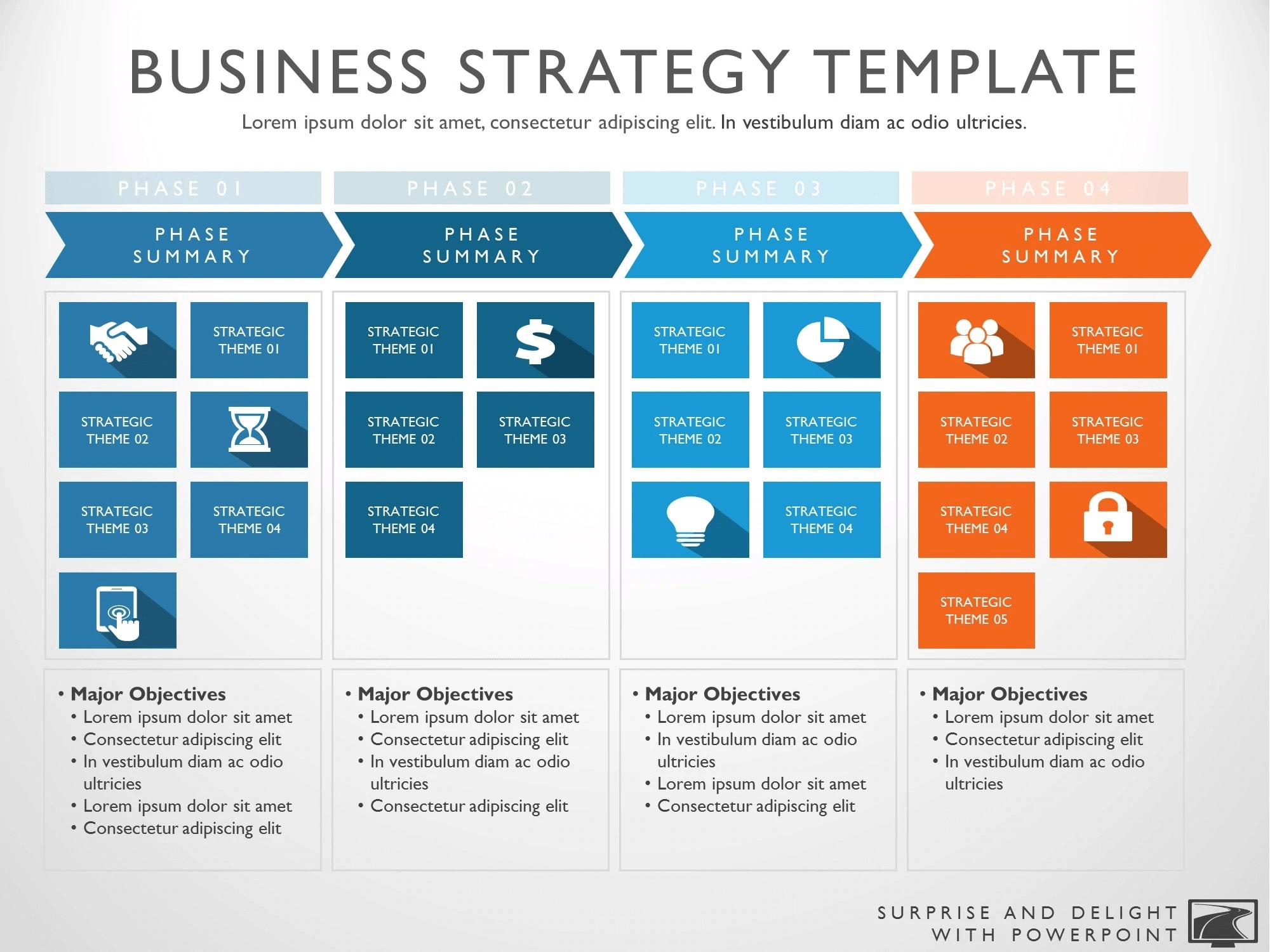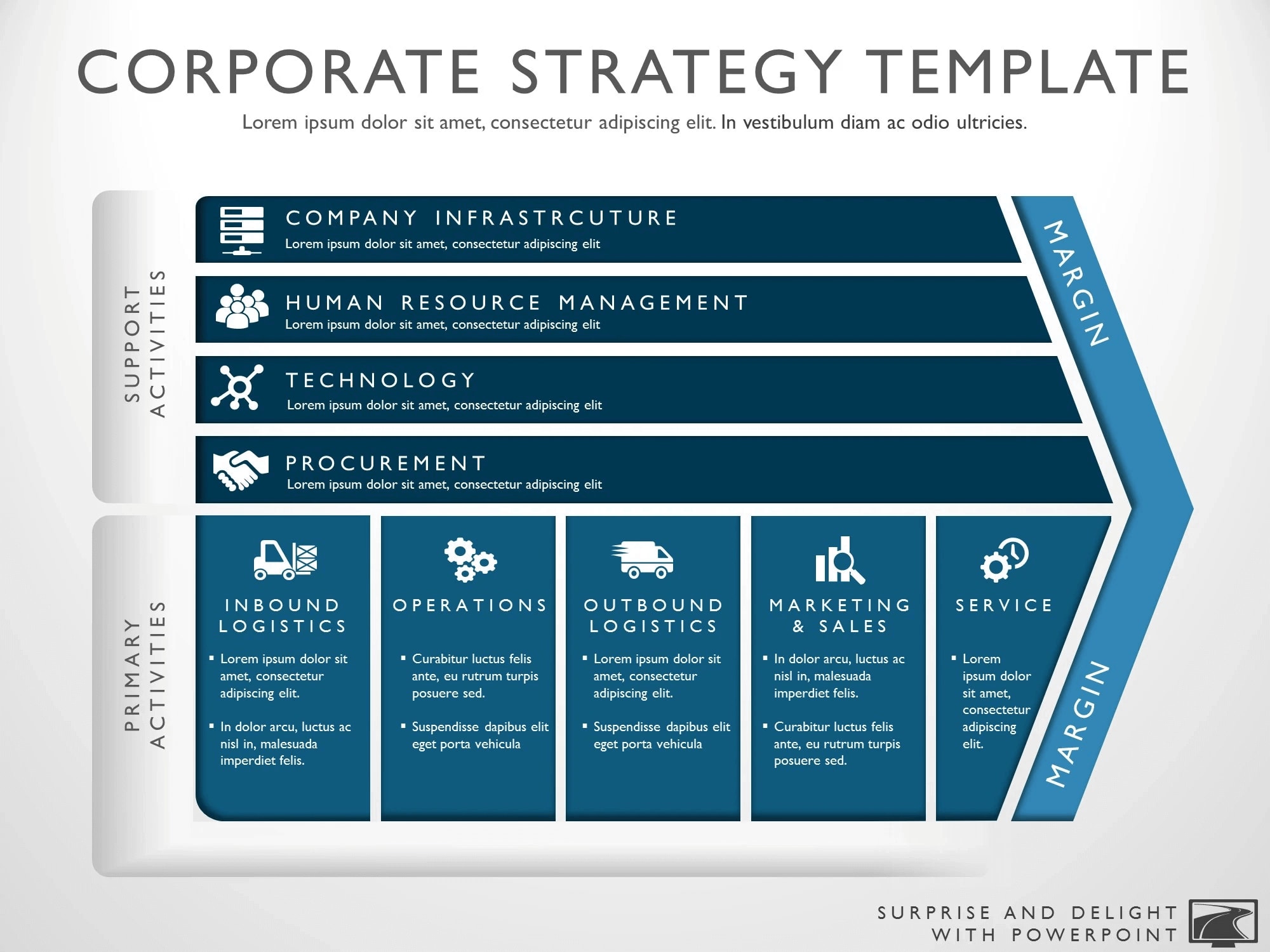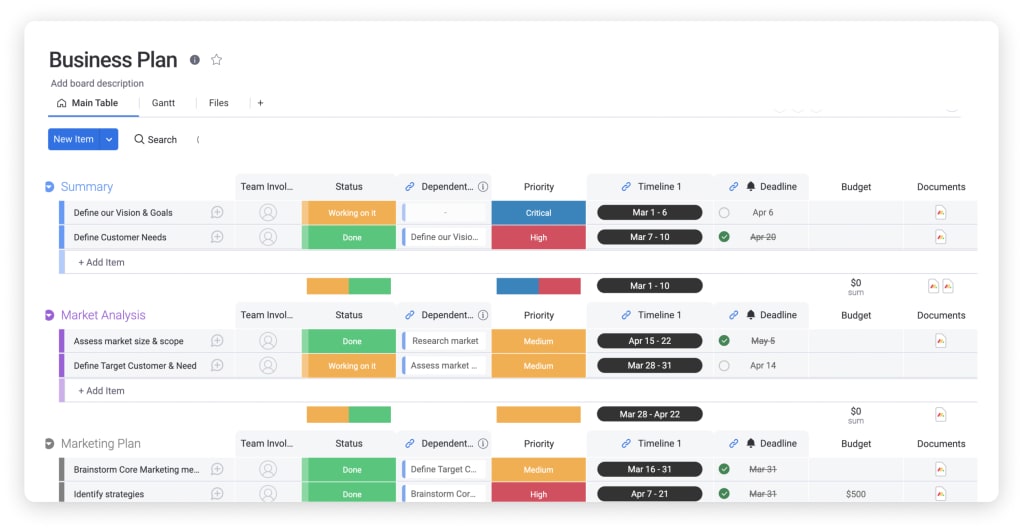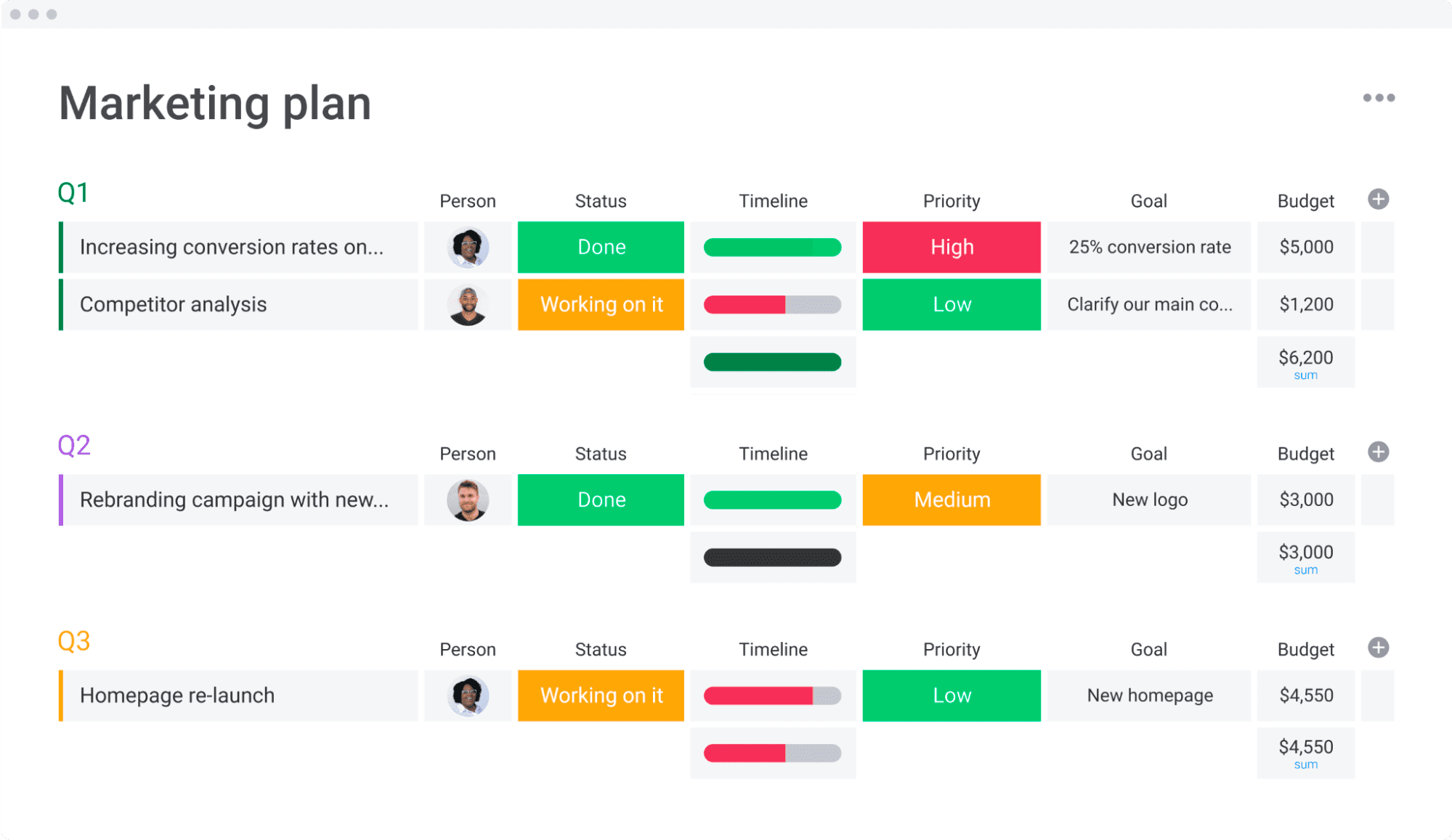If you don’t know where you’re going, then the road you take doesn’t really matter. While wandering is fine for adventures, it’s far from ideal for starting a business or turning a struggling one around. A high-level strategy can help you build some much-needed momentum — and with the right business strategy template, you can ride into the unknown with confidence.
In this article, we’ll get to the core of what a business strategy template is and why you need one. We’ll also explore how monday.com can help you on your journey and answer a few frequently asked questions along the way.
What is a business strategy template?
If you want to truly capitalize on a business opportunity, you have to have a strategy. And not just any strategy will work either. It needs to be a strategy you can pull off with your budget, human resources, timeline, and experience. Let’s quickly define strategy.
A strategy is a careful plan or method for achieving a particular goal, usually over a long period and can be used to drive the success of either a product or service.
A business strategy template acts as a fill-in-the-blank resource that’ll guide you when creating your own winning business strategy. A great one will outline a wide range of factors such as your marketing strategy, go-to market strategy, tools, product-market fit, team dynamic, strategic goals, competitive analysis, and more.
To put it simply, a business strategy template is a cheat sheet for achieving your strategic goals.Why use a business strategy template?
You may have heard about a landmark study performed in the ‘80s where a team of psychologists surveyed people, asking if they believed they were great drivers. Naturally, 80% of them believed they were exceptional drivers.
It’s a funny study because we all know 80% of drivers aren’t exceptional. The same could be said for both small and big business strategies. Very few people would openly admit to having a bad business strategy. A little strategic planning goes a long way when capitalizing on limited key resources, figuring out the key action items your team needs to focus on, and developing some serious business growth in a short period of time.
Using a template can help ensure that you include all the necessary information in your business strategy. In short, it should include everything you need to launch a successful go-to-market strategy and leave room for error and unforeseen events.
If you’re an existing business that needs to pivot or avoid some potential risks, then a fresh business strategy template could be the answer to getting you back on track. Sure, it may be time-consuming and expensive to switch gears, but your investors, staff, and most importantly, your customers will thank you when you get it right. Business strategy templates have many different applications.
What are some examples of a business strategy template?
So how do you go from no business strategy to a brilliant one using a template? Let’s take a look at two business strategy example templates to help you get started.
Business strategy template sorted by phases
This business strategy template breaks up your strategy into different phases. This is helpful because it allows you to picture how your plans progress over time. Within each phase, you can insert information related to different areas of your business. Then, you can also include major objectives at the bottom and mission statement at the top.

Business strategy template sorted by primary and support activities
This business strategy template example organizes information by primary and support activities. This is helpful if you want to be able to clearly understand how each department in your company contributes to your business strategy.

While these two template examples help show you the value of organizing the information that goes into a business strategy, they lack the flexibility and integration that you get from monday.com’s business strategy template.
monday.com’s business strategy template
Unless you’re Google or Apple, you’re probably working with a finite amount of resources. Like any other business, you’re going to need a helping hand once in a while, and that’s where the right business strategy template comes into play.

Here at monday.com, we know how important it is to get your strategy right from the beginning, so we took the liberty of crafting a handy template that’ll boost your confidence and speed things up a bit.
monday.com understands that an iron-clad business strategy isn’t a ‘set it and forget it’ deal. It’s a living, breathing process that needs to remain flexible as your business grows, the competitive landscape changes, and your customer’s needs fluctuate.
You can easily change the columns, swap out section owners, change the status, communicate on specific items, and even set up automations like email triggers and phase advancements. There’s a lot you can do to put this template to work for you rather than letting it collect dust like most programs do.
monday.com takes customization to the next level by offering you a wide array of custom columns, charts, dashboards, and integrations. And the automation actively takes work off your plate and keeps all parties in the know when it matters most.
monday.com’s template makes it easy to build a business strategy by keeping your company’s goals visible at all times. While a business plan or business strategy is necessary for high-level and long-term planning, you’re still going to need some more specific templates to get the job done right.
More related templates from monday.com
Check out a few related templates that are sure to kickstart your next project.
SWOT analysis template
SWOT stands for strengths, weaknesses, opportunities, and threats. At its core, a SWOT analysis helps organizations bring clarity to all the factors that go into making key business decisions. Sure, you can continue to make decisions in a silo without thinking about your customers, competitors, or economic factors, and sometimes you’ll make the right call. But a better long-term play is taking those key factors into account.

A SWOT analysis template complements a business strategy template because it goes a layer deeper. Most companies take the time to factor their strengths and opportunities into their strategic vision, but a lot of them skip over the weaknesses and threats part.
Strategic plan template
There are a lot of words thrown around in the business world that begin to feel synonymous over time. Business plan, business goal, business strategy, strategic plan, and all the other plans all start to sound the same. Believe it or not, there are some key differences.
A business plan and strategic plan template will both include an executive summary, company descriptions, and even mission, vision, and value statements. Where a business plan differs is that it’s an overview of how the business runs day-to-day, while a strategic plan focuses on how you’ll achieve specific initiatives that have the power to transform your business. In short, every company should spend time developing a strategic plan for their project management office (PMO).
Marketing plan template
Marketing strategies are a dime a dozen, and so are marketing strategy templates. So how can you tell which one is worthwhile? Yet again, it’s the engine behind the marketing plan template that makes the difference.

monday.com amplifies your marketing plan by providing a visually appealing board (as shown above), complete customization across your marketing plan columns, and the ability to communicate in real-time with your staff about important initiatives, company updates, or changes to your product or service.
FAQs about business strategy templates
Naturally, with any business process comes a lot of questions, and to help you on your journey, here are the answers to some frequently asked questions.
How do you write a business strategy?
Any writing endeavor begins by asking basic questions and coming up with answers. Good starting points (beyond the templates offered here) include:
- Where are we today?
- What direction are we heading?
- Is that the right path?
- How do we know if it’s the right path?
- What are our strategic objectives?
- What are our tactical plans?
As you answer these questions, try to be as specific as possible. And don’t forget to take your competitors into account.
What are the key elements of a business strategy?
Key elements of a business strategy will vary depending on the type of business you’re starting, the competitive landscape, and many other factors. That being said, there are a few that are universal, such as:
- what your goals are and the corresponding objectives that’ll get you there
- a reflection of not only your strengths but your weaknesses as a company
- potential risks such as competitors, economic factors, law changes, and more
- how you’ll create value for your customers
- how you’ll get the word out about your product or service
- contingency plans for if things don’t go as expected
As you can see, the key elements really break down what it is you want to do, how you’ll get there, what makes you different, and what you’ll do if things don’t go according to plan.


